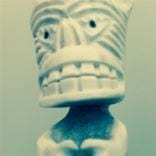
21 Jun Greenland Part 1: The Chronicles of a Naive Arctic Traveller
To gain some perspective, Greenland is roughly the size of Europe, 80% of its land mass is permanently covered in sheet ice, it is situated high in the Arctic latitudes and its small population of 56,000 (mostly Inuit) live on the ice free fjord lined coast. Its infinite ice sheet is vastly unchartered, 2,400km long, between 2 -3km thick and 110,000 years’ old. There are no trees in Greenland nor any roads. Mobility is either by dog sled, boat, kayak (if the ocean is not frozen) or foot.

In attempt to self-navigate 160km commencing from the inland ice (Kangerlussuaq) to Sisimiut, we needed to be fully self-sufficient. There was no human habitation or any communication en-route. A map and compass (with 33 degrees of magnetic declination) was our only source of navigation. Besides being exposed to arctic weather conditions, we had frozen fjords, a mountain range, quicksand and glaciers to navigate. If it all went to pot we did possess a flare gun to potentially notify a passenger jet cruising at 35,000ft on the London to New York run, and a mirror to reflect sun light should we run out of flares.
The plan was simple. Convince two friends to accompany me (Mic and Deano). Fly in from Denmark. Aim to push 20km per day. Complement our meals with succulent wild fresh fish (via yet to be tried ice fishing) and celebrate at the end of a successful trek in the remote coastal Inuit village.

Epistemic Arrogance at its best. It was nothing like we planned. To simplify the experience, it may be easier to chronicle what was learnt from the expedition. There is no list of what was done well.
- A sleeping bag with a rating of -20 degrees does not keep you warm in -20 degrees. It just keeps you alive.
- Leather shoes tend to separate from the plastic soles from the freeze / thaw effect.
- Special note on the boots, have a knife handy to pry the frozen laces off the frozen leather in the morning. Otherwise use ample duck-tape to keep your shoes on, as well as keeping the soles on your shoes.
- Keep everything in your sleeping bag at night to prevent them from freezing. Water bottles, piss bottles, socks, clothes, boots, camera, batteries, pens. This includes yourself.
- On the point above, do not confuse your piss bottle with your water bottle when taking a drink.
- Sleeping bags absorb moisture and by week 1 the down filling will congeal into large heavy balls which is great if you want to replicate wombats in a woolpack.
- If you are intending to carry 32kg on your back, consider taking a sled or snow shoes. Otherwise you are nothing more than a human pole driver in the snow.
- Crampons would be handy while trekking on frozen fjords constituting deep blue ice. Moving 5km with 15cm steps equals 33,000 steps if you are numbers person.
- Maintain a sense of humour when your compass fails to secure a reading amidst high iron deposits whilst caught deep in the mountain range.
- Convince yourself that pushing for 8 hours straight to achieve 4.5km in deep snow is a good productive day.
- If relying on an ice chisel to cut through the fjord ice, make sure it is fit for purpose. A roofing nail at the end of a broom stick does not qualify as an ice chisel.
- It can take up to 1.5km to run down a food wrapper that is dropped on a frozen fjord in a brisk breeze.
- If you only possess a flare gun, you are not on top of the food chain.

The asphyxiation of isolation in a pre-biblical landscape created a primal connection to what was our natural ancestral environment. The wilderness was quantifiably breathtaking. The atmospheric clarity was telescopic. Stumbling across a herd of herd of musk ox in an arctic storm, watching a tornado of snow dancing across a vast ice plain or seeing an arctic white fox sniffing out its next meal under the midnight sun were moments that I have stolen for life.
The tension was also enduringly static. Mic had injured his Achilles tendon, our gear was breaking, we got lost several times in the mountains and Deano had once fallen through the ice. We could not cut through the ice to catch our wild succulent fish so we were well short on nutrition. Arctic storms and unpredictable terrain all played their hand against the clock as well as our available calorie count (we lost 1kg per day of body mass).
Even the locals were amazed by our unexpected arrival into Sisimiut. Some thought we were living Qivitoq: the restless shamed wandering spirits.
This begins Part II on the Greenlandic journey. Living with the Inuits.



Sorry, the comment form is closed at this time.